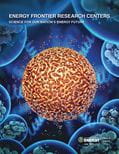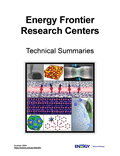High–Power Electrodes for Lithium-Ion Batteries
For novel 3-D anodes made of sheets of carbon (graphene) and silicon nanoparticles, transport studies found much shorter lithium diffusion paths throughout the electrode and fast lithiation/delithiation of the nanoparticles.
Significance and ImpactThis anode design holds a greater charge than conventional lithium-ion anodes and charges/discharges more rapidly while maintaining mechanical stability.
Research Details |
3-D graphenic scaffold with in-plane defects and Si nanoparticles between sheets: A novel method of synthesis creates an anode with a stable structure of holey graphene layers propped up by intermixed Si nanoparticles
Reference: Xin Zhao, Cary M. Hayner, Mayfair C. Kung, and Harold Kung, In-Plane Vacancy-Enabled High-Power Si-Graphene Composite Electrode for Lithium-Ion Batteries, Adv. Energy Mater., 1, 1079-1084 (2011) [DOI: 10.1021/ja200595f].
Support: Work was performed at Northwestern University and supported by the Center for Electrical Energy Storage (CEES),an EFRC led by Michael Thackeray at Argonne National Laboratory.









